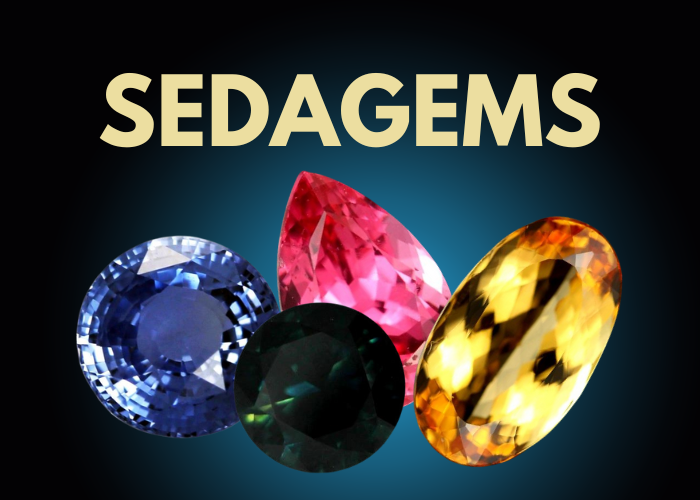Non hai fatto offerte per questa asta.
10.20 CTS ALEXANDRITE - SPECIMEN FROM TANZANIA [STS2249]
- SKU
- Dimensioni (mm)
- 12.000 x 9.000 x 9.000mm
- Peso (cts)
- 10.200
- Tipo
- Specimen
- Colori
-
ALEXANDRITE SPECIMEN
This is a natural untreated Alexandrite specimen from Tanzania which i bought from the miner on my last trip there. They are not suitable for faceting but can be cabbed or kept as a specimen.
The most sensational feature about this stone, however, is its surprising ability to change its colour. Green or bluish-green in daylight, alexandrite turns a soft shade of red, purplish-red or raspberry red in incandescent light. This unique optical characteristic makes it one of the most valuable gemstones of all, especially in fine qualities.
Alexandrite is very scarce: this is due to its chemical composition. It is basically a chrysoberyl, a mineral consisting of colourless or yellow transparent chrysoberyl, chrysoberyl cat’s eye and colour-changing alexandrite (also in cat’s eye varieties). It differs from other chrysoberyls in that it not only contains iron and titanium, but also chromium as a major impurity. And it is this very element which accounts for the spectacular colour change. Rarely, vanadium may also play a part. According to CIBJO nomenclature, only chrysoberyls displaying a distinct change of colour may be termed alexandrite.
Like many other gemstones, alexandrite emerged millions of years ago in a metamorphic environment. But unlike many others, its formation required specific geological conditions. The chemical elements beryllium (a major constituent in chrysoberyl) and chromium (the colouring agent in alexandrite) have contrasting chemical characteristics and do not as a rule occur together, usually being found in contrasting rock types. Not only has Nature brought these contrasting rock types into contact with each other, but a lack of the chemical element silica (the second most common element in the Earth's crust) is also required to prevent the growth of emerald. This geological scenario has occurred only rarely in the Earth's history and, as a result, alexandrite crystals are very scarce indeed.
- SKU
- Dimensioni (mm)
- 12.000 x 9.000 x 9.000 mm
- Peso (cts)
- 10.200
- Tipo
- Specimen
- Colori
-
ALEXANDRITE SPECIMEN
This is a natural untreated Alexandrite specimen from Tanzania which i bought from the miner on my last trip there. They are not suitable for faceting but can be cabbed or kept as a specimen.
The most sensational feature about this stone, however, is its surprising ability to change its colour. Green or bluish-green in daylight, alexandrite turns a soft shade of red, purplish-red or raspberry red in incandescent light. This unique optical characteristic makes it one of the most valuable gemstones of all, especially in fine qualities.
Alexandrite is very scarce: this is due to its chemical composition. It is basically a chrysoberyl, a mineral consisting of colourless or yellow transparent chrysoberyl, chrysoberyl cat’s eye and colour-changing alexandrite (also in cat’s eye varieties). It differs from other chrysoberyls in that it not only contains iron and titanium, but also chromium as a major impurity. And it is this very element which accounts for the spectacular colour change. Rarely, vanadium may also play a part. According to CIBJO nomenclature, only chrysoberyls displaying a distinct change of colour may be termed alexandrite.
Like many other gemstones, alexandrite emerged millions of years ago in a metamorphic environment. But unlike many others, its formation required specific geological conditions. The chemical elements beryllium (a major constituent in chrysoberyl) and chromium (the colouring agent in alexandrite) have contrasting chemical characteristics and do not as a rule occur together, usually being found in contrasting rock types. Not only has Nature brought these contrasting rock types into contact with each other, but a lack of the chemical element silica (the second most common element in the Earth's crust) is also required to prevent the growth of emerald. This geological scenario has occurred only rarely in the Earth's history and, as a result, alexandrite crystals are very scarce indeed.
| Fornitore di spedizioni | Spedizione in :paese | Spedizione nel resto del mondo |
|---|---|---|
| FedEx | $12.00 / : giorni giorni | $39.00 / : giorni giorni |
|
:Paese
FedEx è scontato a :prezzo per ordini con :quantità o più articoli
Resto del mondo
FedEx è scontato a :prezzo per ordini con :quantità o più articoli
|
||
| Registered Shipping | $9.00 / : giorni giorni | $16.00 / : giorni giorni |
|
:Paese
Registered Shipping è scontato a :prezzo per ordini con :quantità o più articoli
Resto del mondo
Registered Shipping è scontato a :prezzo per ordini con :quantità o più articoli
|
||

-
 Positivo
PositivoPaid and shipped - no feedback left after 100 days
-
 Positivo
PositivoBeautiful agate piece , and as always fast efficient service from Sedagems
-
 Positivo
PositivoNice
-
 Positivo
PositivoGorgeous stones, very happy
-
 Positivo
PositivoGorgeous stone, very happy
Perché gli utenti superano se stessi?
Quando viene effettuata un'offerta, questo è l'importo massimo che un utente è disposto a offrire per il prodotto. Il nostro sistema farà quindi automaticamente un'offerta per conto di quegli utenti, aumentando in modo incrementale l'offerta per mantenere la loro posizione di miglior offerente, fino al massimo specificato.
Quando è presente un'icona che indica "Offerta automatica", significa che il nostro sistema sta attivamente facendo offerte per l'utente in base alla sua offerta massima. Potrebbe sembrare che gli utenti stiano superando l'offerta, ma è semplicemente il risultato dell'aggiornamento dell'offerta da parte del sistema in modo da riflettere il limite massimo degli utenti.











![22.9CTS VARASCITE 'SPIDER WEB' AUSTRALIA [MGW 4616]](https://liveplatforms-production.b-cdn.net/tenants/gr/uploads/images/490000-494999/490866/55236df10a48f.JPG?width=480&aspect_ratio=1001%3A1000)





